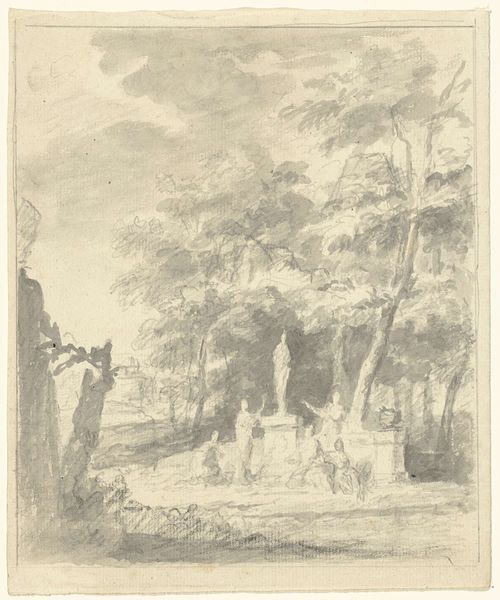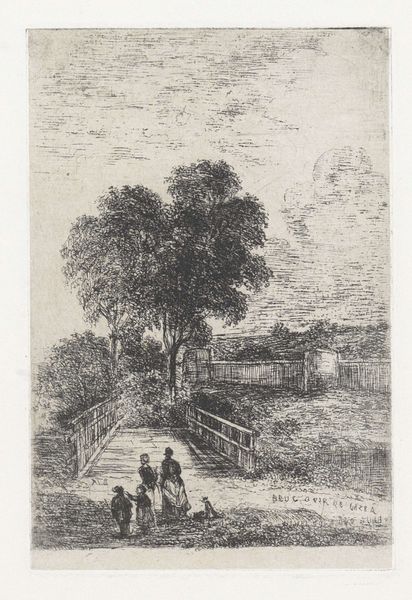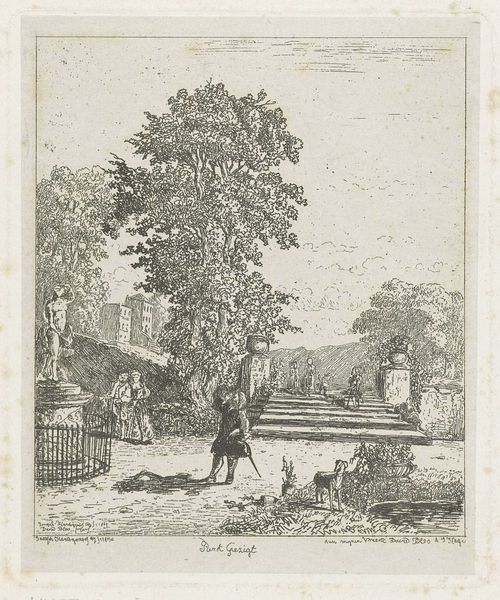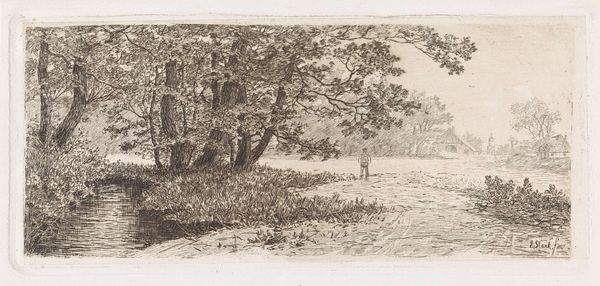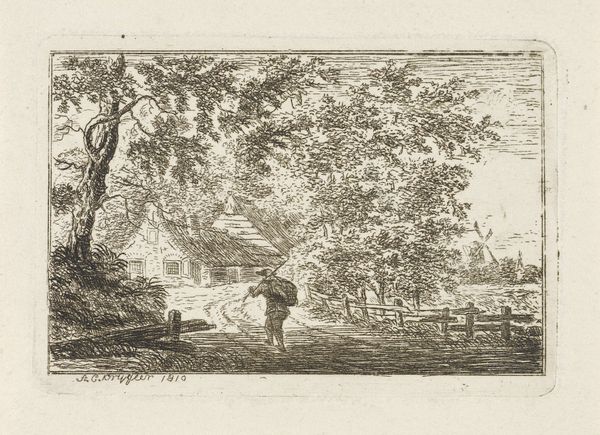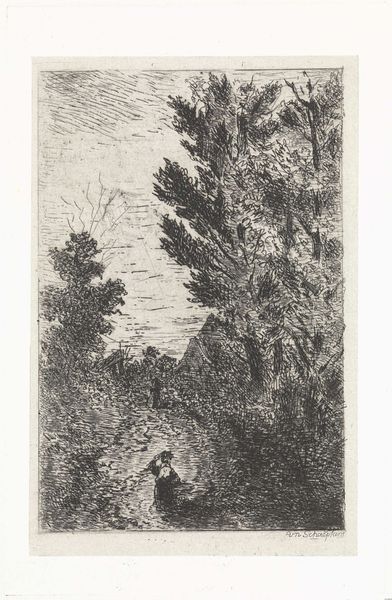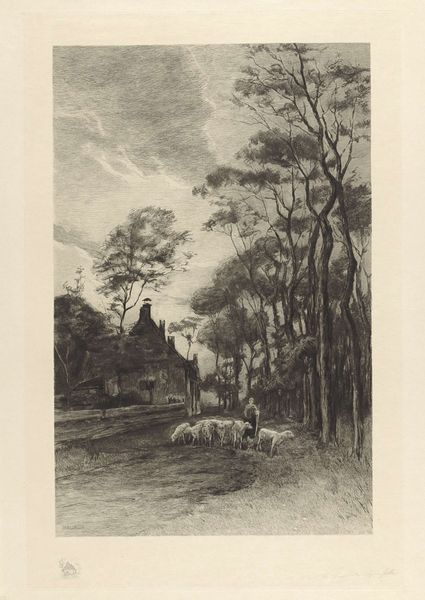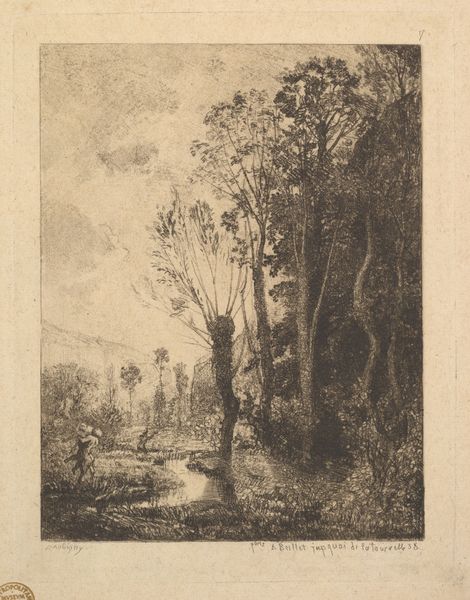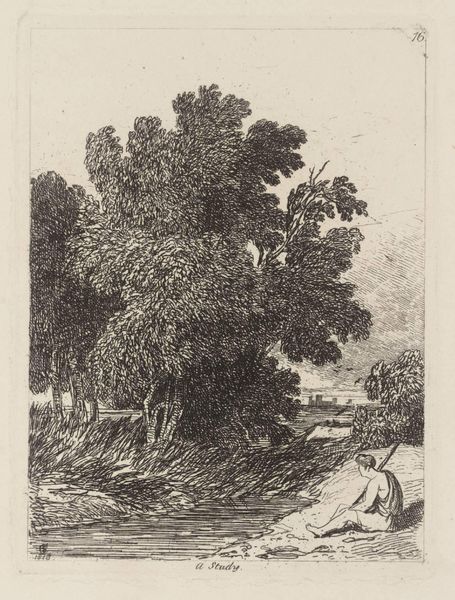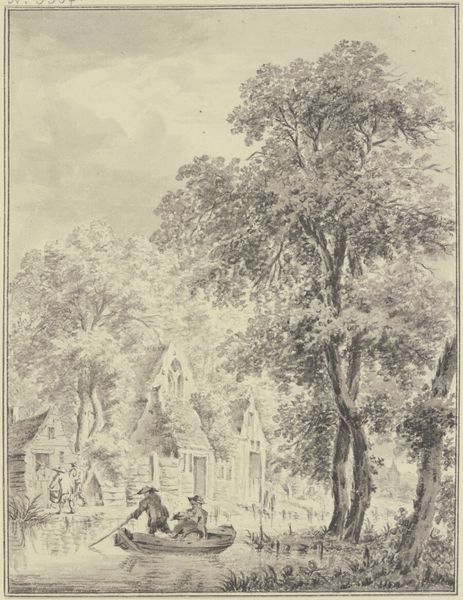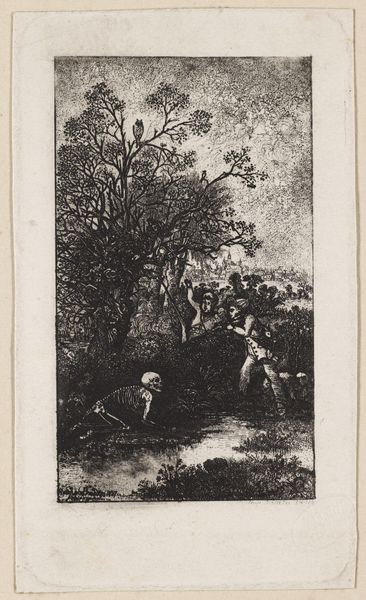
Gezicht op het standbeeld van Vondel in het Vondelpark c. 1847 - 1884
0:00
0:00
drawing, paper, ink, pencil
#
drawing
#
landscape
#
paper
#
ink
#
pencil drawing
#
pencil
#
cityscape
#
genre-painting
Dimensions: width 154 mm, height 219 mm
Copyright: Rijks Museum: Open Domain
Curator: The somber mood really strikes me in this ink drawing, it’s almost dreamlike in its soft execution. Editor: Here we have Johan Conrad Greive’s, "Gezicht op het standbeeld van Vondel in het Vondelpark," dating approximately from 1847 to 1884. The artwork depicts a view of the Vondel statue within Vondelpark, rendered in pencil and ink on paper. Curator: Dreamlike indeed, especially considering the setting. The Vondelpark was emerging as this space for public enjoyment, and this monument becomes a stage for different classes to mingle, captured in such a democratic medium as ink drawings meant for wide circulation. Editor: Agreed, but I'm more fixated on the drawing process itself. Think of the labour involved in creating such a detailed cityscape with just pencil and ink. The texture is wonderfully achieved. Curator: It does reveal the layers of meaning we assign to urban spaces. It suggests not just an open gathering place but a curated stage of bourgeois life and leisure, which is quite the claim at this time. Editor: The materials speak of that bourgeois sensibility as well. The paper itself—consider the mills, the skilled labor in its production, and how it carries the delicate lines. Also, who was producing the statue? Where were the raw materials from and how did the park employees change the landscape for viewing? Curator: That reading expands how we view this cityscape: a vision dependent upon the structures of class. The material and subjects become deeply interconnected, reflecting society's priorities. Editor: Exactly. And on how such simple materials capture not just an image, but all the societal relations imbedded into this image. It really grounds us in thinking about the time it was created. Curator: It enriches our view on what at first appears as an idyllic scene by pointing at the less visible infrastructure supporting social life and, more broadly, artistic practices. Editor: Definitely. It's always rewarding to find that a look at how something is made gives us insights into why.
Comments
No comments
Be the first to comment and join the conversation on the ultimate creative platform.

